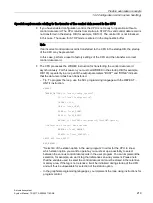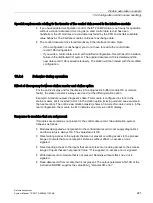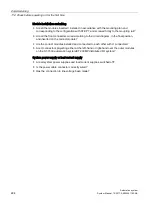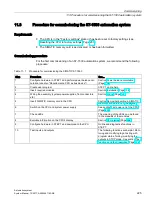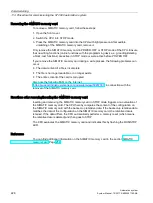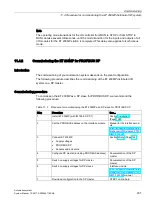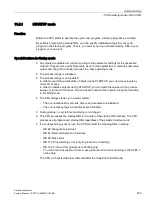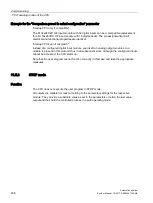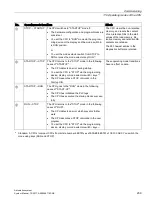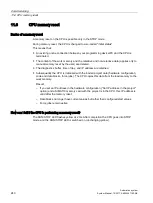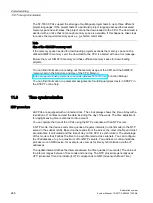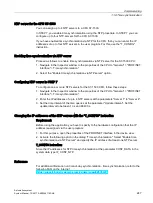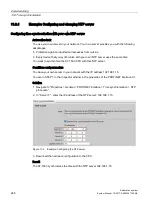
Commissioning
11.5 Operating modes of the CPU
Automation system
System Manual, 12/2017, A5E03461182-AE
233
11.5.1
STARTUP mode
Function
Before the CPU starts to execute the cyclic user program, a startup program is executed.
By suitably programming startup OBs, you can specify initialization tags for your cyclic
program in the startup program. That is, you can set up one or several startup OBs in your
program, or none at all.
Special features in Startup mode
●
All outputs are disabled or react according to the parameter settings for the respective
module: They provide a substitute value as set in the parameters or retain the last value
output and bring the controlled process to a safe operating mode.
●
The process image is initialized.
●
The process image is not updated.
In order to read the current state of inputs during STARTUP, you can access inputs by
direct I/O access.
In order to initialize outputs during STARTUP, you can write the values via the process
image or via direct I/O access. The values are output at the outputs during the transition
to the RUN mode.
●
The CPU always starts up in a warm restart.
–
The non-retentive bit memories, timers and counters are initialized.
–
The non-retentive tags in data blocks are initialized.
●
During startup, no cycle time monitoring is running yet.
●
The CPU processes the startup OBs in the order of the startup OB numbers. The CPU
processes all programmed startup OBs regardless of the selected startup mode.
●
If a corresponding event occurs, the CPU can start the following OBs in startup:
–
OB 82: Diagnostics interrupt
–
OB 83: Removal/insertion of modules
–
OB 86: Rack error
–
OB 121: Programming error (only for global error handling)
–
OB 122: Time-out (for global error handling only)
You can find a description of how to use global and local error handling in the STEP 7
online help.
The CPU cannot start all other OBs until after the transition to RUN mode.
Summary of Contents for Simatic S7-1500/ET 200MP
Page 1: ......

